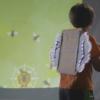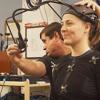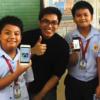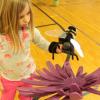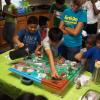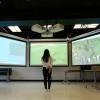
Intro Blog

Webinar Panel
Recorded: February 10, 2021
Facilitators: Tom Moher and Wendy Martin
Panelists: Noel Enyedy, Emma Mercier, Noelani Ogasawara Morris, Johanna Thompson, and Jim Slotta
This webinar explores three digital learning projects funded by NSF that utilize mixed reality, indoor location tracking, interactive collaborative surfaces, and ambient displays to support teaching and learning in STEM. Our panel of researchers and educators will discuss the development of these projects and the challenges faced and strategies employed by teachers when attempting to integrate these ambitious learning technologies into their classrooms. Come and join what promises to be a fascinating discussion between researchers and educators as they explore the future of STEM teaching. This webinar is co-moderated by Tom Moher and Wendy Martin. It is a collaborative effort with CIRCLS, the STEM for All Multiplex and the STEM Teacher Leadership Network (all funded by NSF).
Discussion
Synthesis Brief

Related Videos
